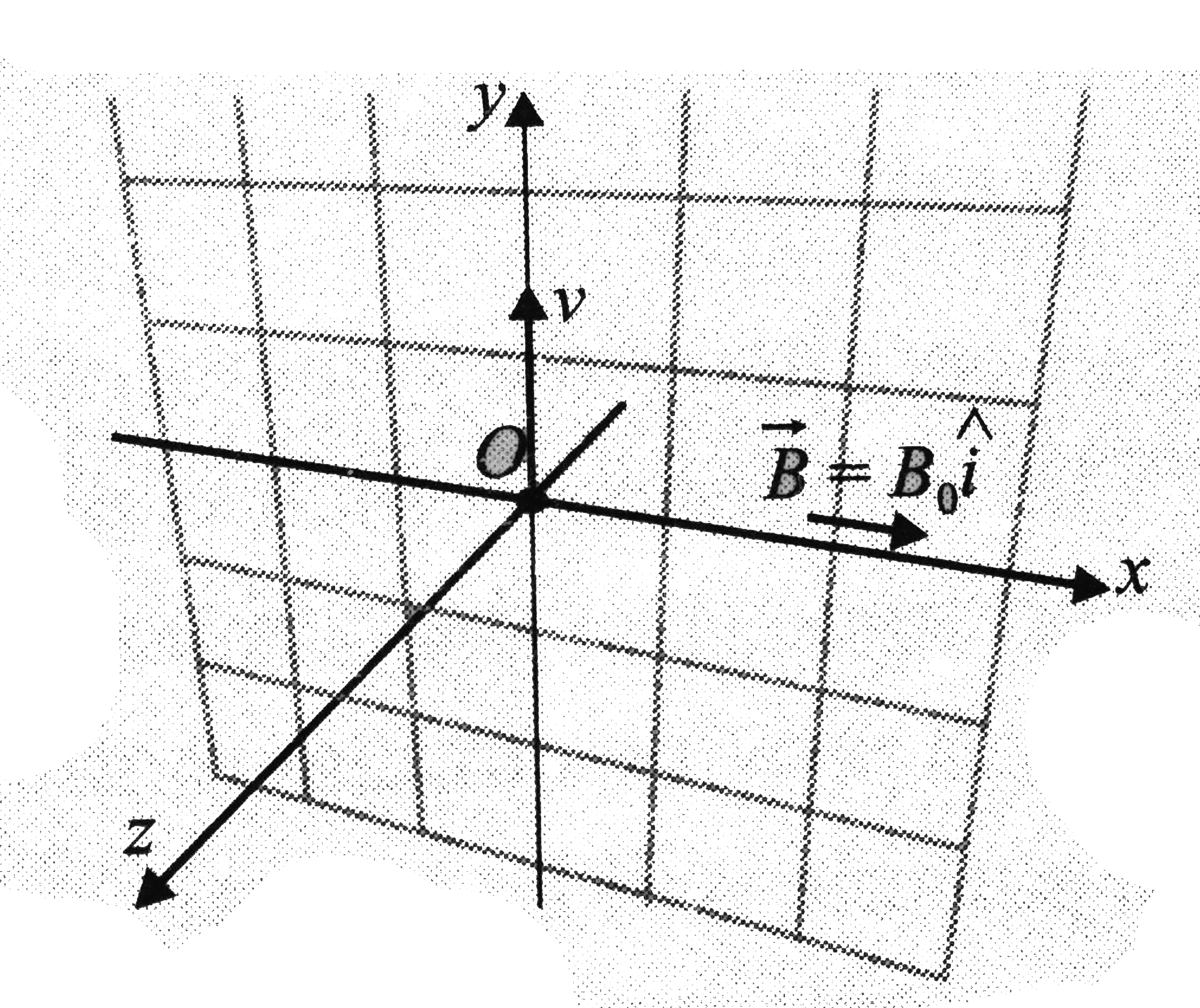A particle travels so that its acceleration is given by →a=5costˆi−3sintˆj. If the particle is located at (−3,2) at time t=0 and is moving with a velocity given by (−3ˆi+2ˆj). Find
(i) The velocity [→v=∫→a.dt] at time t and
(ii) The position vector [→r=∫→v.dt] of the particle at time t(t>0).
The correct Answer is:(a) →v=(5sint−3)ˆi+(3cost−1)ˆj,(b)(2−5cost−3t)ˆi+(2+3sint−t)ˆj
To solve the problem, we will follow these steps:
Step 1: Find the velocity vector →v(t)
Given the acceleration vector:
→a=5cos(t)^i−3sin(t)^j
We know that the velocity vector can be found by integrating the acceleration vector with respect to time t:
→v(t)=∫→adt+→v0
where →v0 is the initial velocity vector.
The initial velocity vector is given as:
→v0=−3^i+2^j
Now we can integrate the components of the acceleration vector:
1. For the ^i component:
vx(t)=∫5cos(t)dt=5sin(t)+C1
2. For the ^j component:
vy(t)=∫−3sin(t)dt=3cos(t)+C2
Now we need to determine the constants C1 and C2 using the initial conditions at t=0:
- At t=0:
vx(0)=−3⇒5sin(0)+C1=−3⇒C1=−3
vy(0)=2⇒3cos(0)+C2=2⇒C2=−1
Thus, the velocity vector becomes:
→v(t)=(5sin(t)−3)^i+(3cos(t)−1)^j
Step 2: Find the position vector →r(t)
Next, we find the position vector by integrating the velocity vector:
→r(t)=∫→v(t)dt+→r0
where →r0 is the initial position vector.
The initial position vector is given as:
→r0=−3^i+2^j
Now, we can integrate the components of the velocity vector:
1. For the ^i component:
x(t)=∫(5sin(t)−3)dt=−5cos(t)−3t+C3
2. For the ^j component:
y(t)=∫(3cos(t)−1)dt=3sin(t)−t+C4
Again, we determine the constants C3 and C4 using the initial conditions at t=0:
- At t=0:
x(0)=−3⇒−5cos(0)−3(0)+C3=−3⇒C3=2
y(0)=2⇒3sin(0)−0+C4=2⇒C4=2
Thus, the position vector becomes:
→r(t)=(−5cos(t)−3t+2)^i+(3sin(t)−t+2)^j
Final Results:
1. The velocity vector at time t:
→v(t)=(5sin(t)−3)^i+(3cos(t)−1)^j
2. The position vector at time t:
→r(t)=(−5cos(t)−3t+2)^i+(3sin(t)−t+2)^j
Given the acceleration vector:
→a=5cos(t)^i−3sin(t)^j
We know that the velocity vector can be found by integrating the acceleration vector with respect to time t:
→v(t)=∫→adt+→v0
where →v0 is the initial velocity vector.
→v0=−3^i+2^j
1. For the ^i component:
vx(t)=∫5cos(t)dt=5sin(t)+C1
2. For the ^j component:
vy(t)=∫−3sin(t)dt=3cos(t)+C2
- At t=0:
vx(0)=−3⇒5sin(0)+C1=−3⇒C1=−3
vy(0)=2⇒3cos(0)+C2=2⇒C2=−1
→v(t)=(5sin(t)−3)^i+(3cos(t)−1)^j
Next, we find the position vector by integrating the velocity vector:
→r(t)=∫→v(t)dt+→r0
where →r0 is the initial position vector.
→r0=−3^i+2^j
1. For the ^i component:
x(t)=∫(5sin(t)−3)dt=−5cos(t)−3t+C3
2. For the ^j component:
y(t)=∫(3cos(t)−1)dt=3sin(t)−t+C4
- At t=0:
x(0)=−3⇒−5cos(0)−3(0)+C3=−3⇒C3=2
y(0)=2⇒3sin(0)−0+C4=2⇒C4=2
→r(t)=(−5cos(t)−3t+2)^i+(3sin(t)−t+2)^j
1. The velocity vector at time t:
→v(t)=(5sin(t)−3)^i+(3cos(t)−1)^j
2. The position vector at time t:
→r(t)=(−5cos(t)−3t+2)^i+(3sin(t)−t+2)^j
Topper's Solved these Questions
- KINEMATICS-2DBOOK - ALLENCHAPTER - KINEMATICS-2DEXERCISE - Exercise (O-1)
40 Videos
- KINEMATICS-2DBOOK - ALLENCHAPTER - KINEMATICS-2DEXERCISE - Exercise (O-2)
46 Videos
- KINEMATICS-2DBOOK - ALLENCHAPTER - KINEMATICS-2DEXERCISE - Exercise (S-1)
30 Videos
- GRAVITATIONBOOK - ALLENCHAPTER - GRAVITATIONEXERCISE - EXERCISE 4
9 Videos
- MOTION IN A PALNEBOOK - ALLENCHAPTER - MOTION IN A PALNEEXERCISE - SOLVED EXAMPLE
28 Videos
Similar Questions
Knowledge Check
If →a=ˆi+ˆj+ˆk,→a.→b=1 and →a×→b=ˆj−ˆk, then the vector →b is
Aˆi−ˆj+ˆkB2ˆi−ˆkC2ˆiDˆi
A particle is moving with a position vector, →r=[a0sin(2πt)ˆi+a0cos(2πt)ˆj]. Then -
View SolutionA particle of mass 2kg is moving with velocity →v0=(2ˆi−3ˆj)m/s in free space. Find its velocity 3s after a constant force →F=(3ˆi+4ˆj)N starts acting on it.
View SolutionA particle move so that its position verctor varies with time as →r=Acosωtˆi+Asinωtˆj. Find the
a. initial velocity of the particle,
b. angle between the position vector and velocity of the particle at any time, and
c. speed at any instant.
View SolutionA charge particle of mass m and charge q is projected with velocity v along y-axis at t=0.

Find the velocity vector and position vector of the particle →v(t)and→r(t) in relation with time.
View SolutionA charged particle has acceleration →a=2ˆi+xˆj in a megnetic field →B=−3ˆi+2ˆj−4ˆk. Find the value of x.
View SolutionPosition vector of a particle moving in space is given by :
→r=3sintˆi+3costˆj+4tˆk
Distance travelled by the particle in 2s is :
View SolutionThe position of a particle at time moving in x−y plane is given by →r=ˆi+2ˆjcosωt. Then, the motikon of the paricle is :
View Solution
